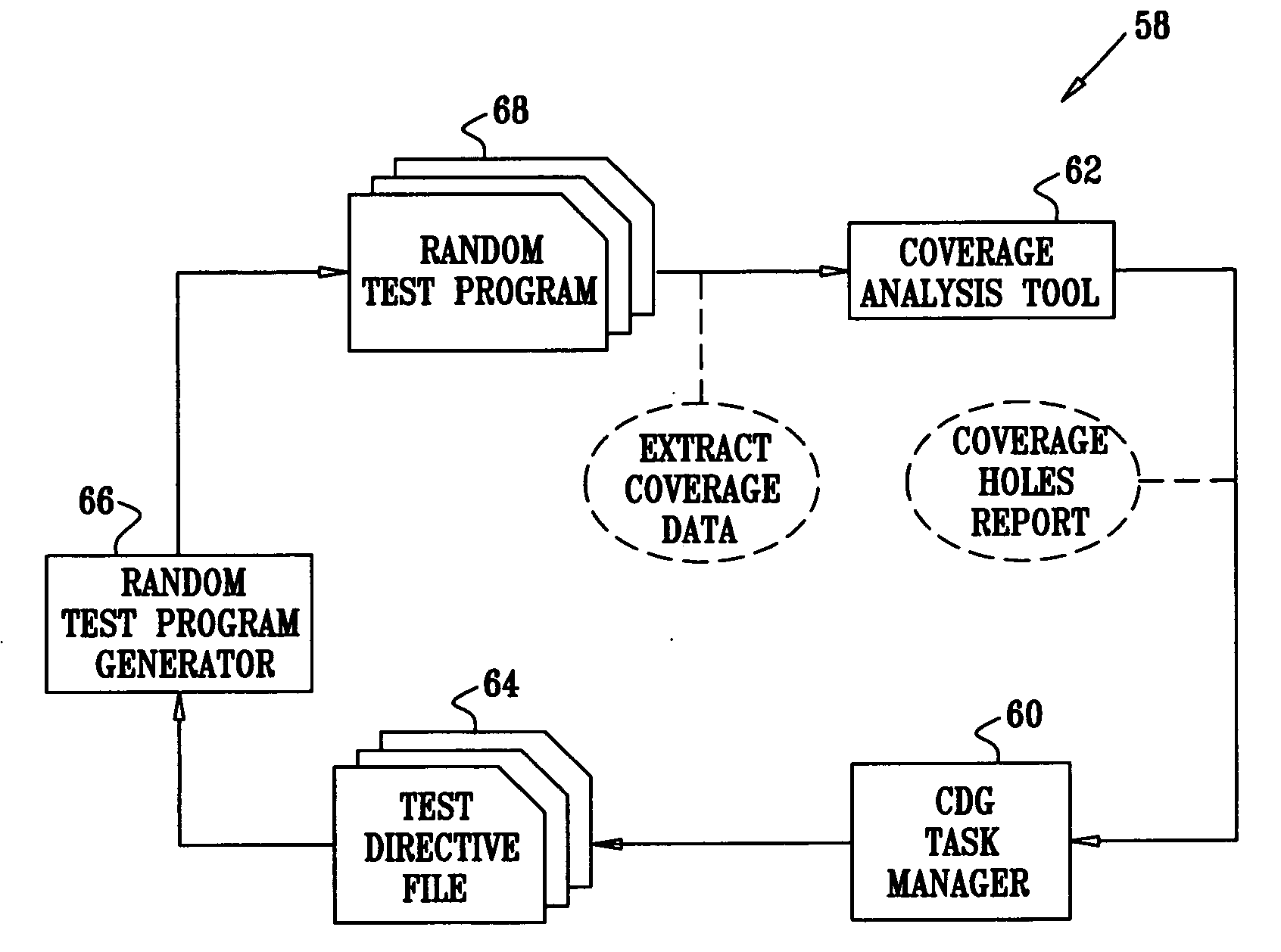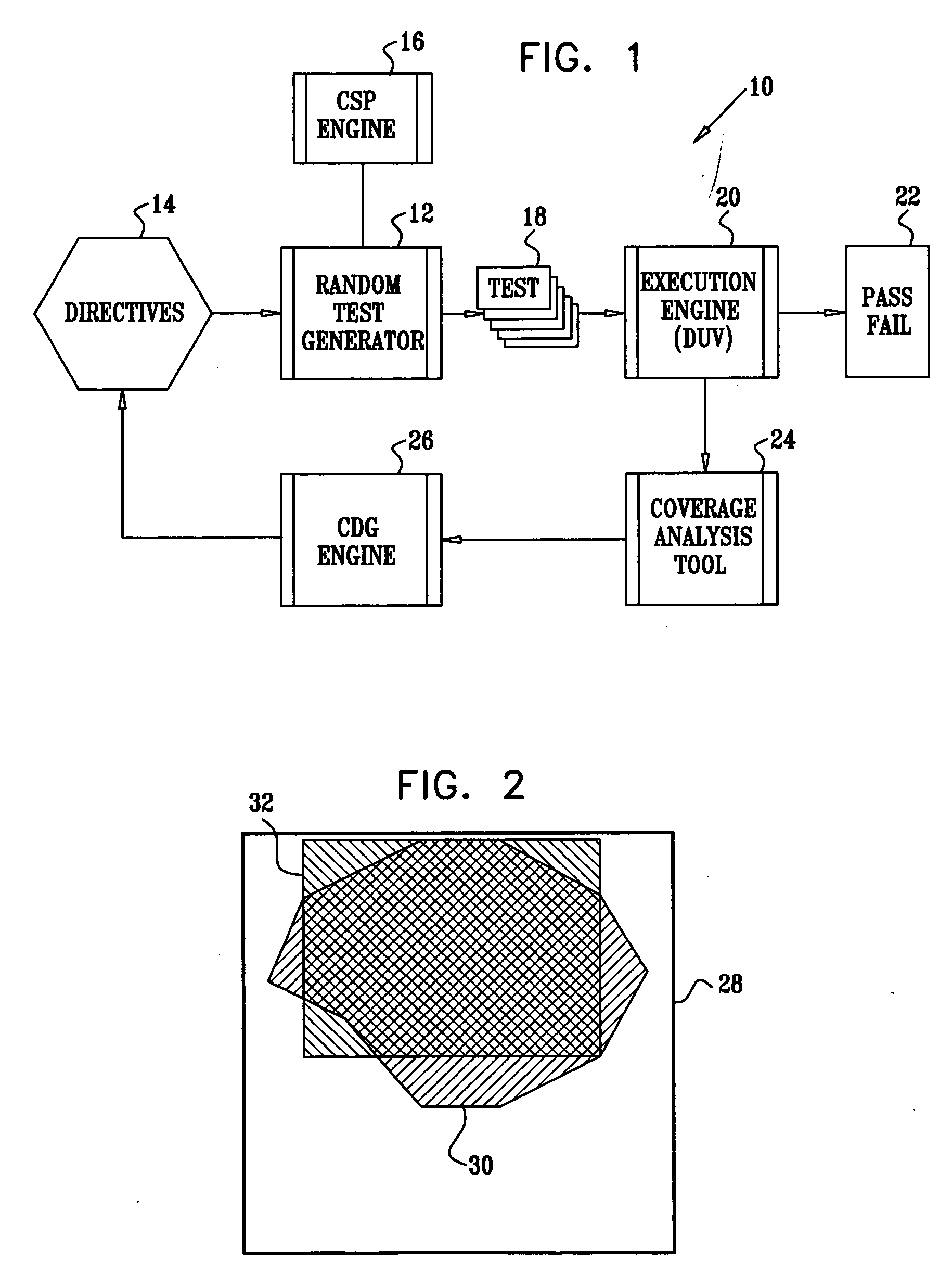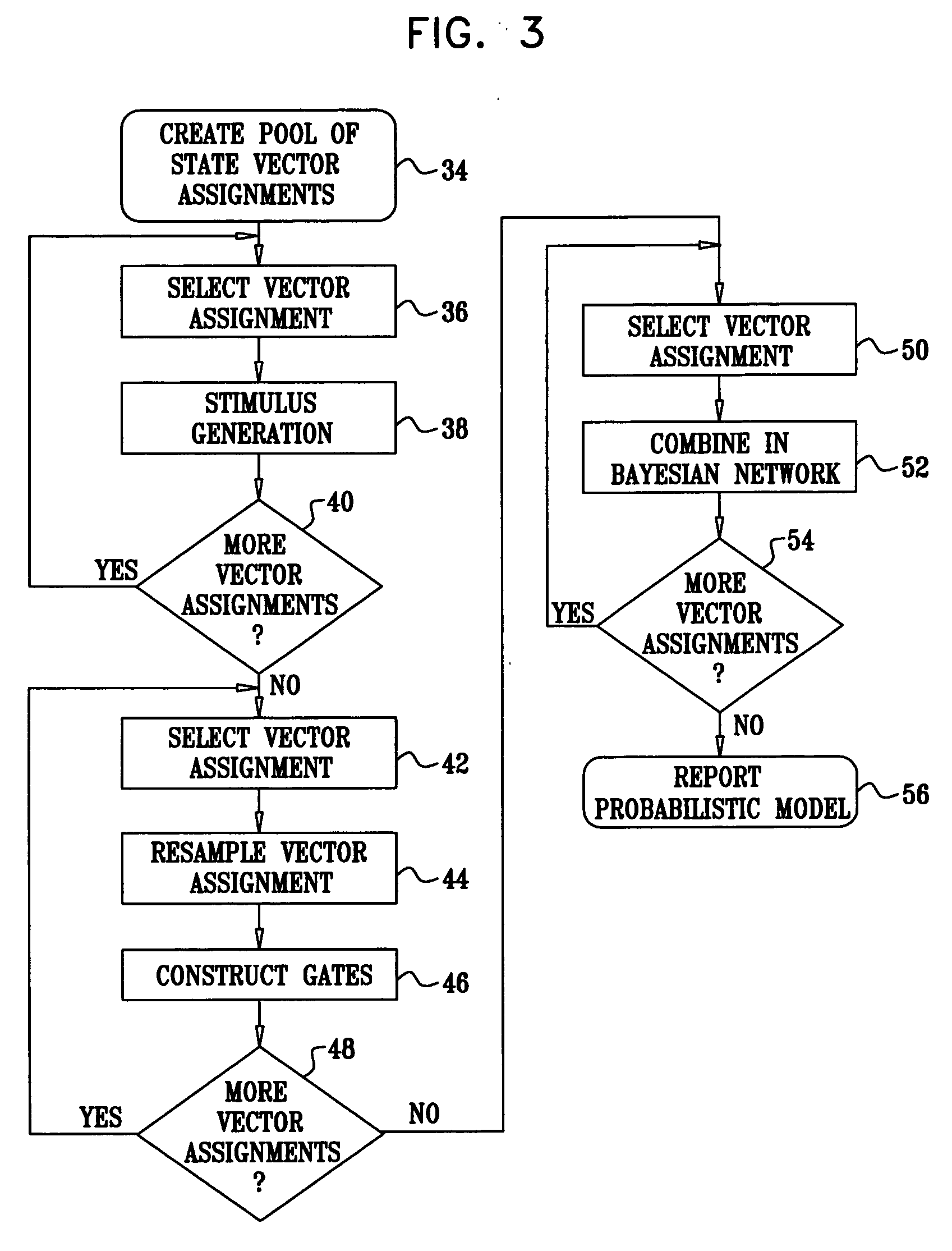Harnessing machine learning to improve the success rate of stimuli generation
a machine learning and stimuli technology, applied in the field of functional design verification, can solve the problems of reducing difficult and time-consuming, if not impossible, and not being easy for the user to find such an initial state, so as to reduce the randomness of the generated tes
- Summary
- Abstract
- Description
- Claims
- Application Information
AI Technical Summary
Benefits of technology
Problems solved by technology
Method used
Image
Examples
example 1
[0068] The invention has been tested as part of a feed-back-based coverage directed generation (CDG), whose goal is to cover the every-other coverage model for a PowerPC® processor. The CDG system is explained in further detail in the document Coverage Directed Test Generation for Functional Verification Using Bayesian Networks, S. Fine and A. Ziv, in Proceedings of the 40th Design Automation Conference, pages 286-291, June 2003. A model, known as the “every-other model”, is defined as all possible pairs of consecutive instructions in program order that are executed without exceptions. While the task of generating test programs that cover the every-other model seems easy, this is not the case. In fact, previous attempts to cover the model required several weeks of human effort and hundred of thousands or more tests to cover the model. In many cases, these attempts failed to reach 100% coverage.
[0069] The main source of difficulty in generating test programs for the every-other mode...
example 2
[0076] The above-described method was applied using X-Gen, a system level test generator, which is described in the document X-Gen: A Random Test-case Generator for Systems and SoCs, R. Emek, I. Jaeger, Y. Naveh, G. Bergman, G. Aloni, Y. Katz, M. Farkash, I. Dozoretz, and A. Goldin, in IEEE International High Level Design Validation and Test Workshop, pp 145-150, October 2002. Three experiments of increasing complexity were conducted.
[0077] In each of the first two experiments, a request file was selected and it was attempted to improve X-Gen's success rate on it. The X-Gen system was tested in two modes of interaction: (1) generation mode, in which X-Gen generated assiguments that were expected to succeed; (2) filter mode, in which X-Gen generated assignments, after which those expected to fail were rejected. Table 1 shows, for each experiment, the success rate when X-Gen was run freely in a conventional mode of operation, lacking the adaptations according to the invention, and wh...
PUM
 Login to view more
Login to view more Abstract
Description
Claims
Application Information
 Login to view more
Login to view more - R&D Engineer
- R&D Manager
- IP Professional
- Industry Leading Data Capabilities
- Powerful AI technology
- Patent DNA Extraction
Browse by: Latest US Patents, China's latest patents, Technical Efficacy Thesaurus, Application Domain, Technology Topic.
© 2024 PatSnap. All rights reserved.Legal|Privacy policy|Modern Slavery Act Transparency Statement|Sitemap



